After spending some time where Marilyn Monroe famously filmed Niagara last week, and then reading a little story about how she always kicked her shoes off the minute she walked in the doors of the Brock Hotel where she was staying as they made the movie, I have had her on my mind.
Marilyn Monroe carved a girl-shaped space in my heart.
Even as a kid, I could see that she wanted to be, and deserved to be, so much more than how she was perceived by the general public. I always felt like I’d want to hang out with Marilyn, like she’d be good company as we danced in the living room, played records and shared revelations.
I plastered her posters on my bedroom walls and felt like she was kind of a fairy godmother. I could mentally share my teen angst with her. I watched all her movies and learned all her songs, then worked the comedic gold-digger number ‘I’m Gonna File My Claim’ into my repertoire and eventually recorded it (though it didn’t make the cut) for the album I made with my dad thirty-some years after I’d first seen Australian icon Robyn Archer perform it in her ground breaking one woman show exploring female stars who died tragically.
The details of the traumatic upbringing, sparkling career, multiple marriages, addictions and mysterious death of Norma Jeane Baker, or Mortenson, aka Marilyn Monroe, are well known.
Considering that severe emotional trauma can trigger stuttering, it’s unsurprising to find that Marilyn developed a severe stutter as a child after surviving her mother’s mental illness and emotional cruelty, and after having moved through twelve foster homes by the age of fourteen. When Marilyn got into acting, she was taught to lower her voice in order to help control the stutter, and this ended up creating her signature breathy voice. When she was working on her last film, Something’s Got to Give, under great pressure, ill and full of anxiety, her stutter returned.
In the early Hollywood days, Marilyn and her roommate Shelley Winters would sit in Schwab’s Drugstore and fantasise about having perfect husbands and winning Oscars. They lived together for a year, sharing their wardrobes and a mink coat. Shelley later said that Marilyn was interested in civil rights, in politics, and in reading poetry and plays. As a protest against the double standards of the time, they made a list of men they’d like to have love affairs with. Shelley’s included all the handsome leading men of the day – Gable, Brando et al. – while Marilyn’s began with Einstein and went on to lesser-known writers and poets, none of them under fifty. Shelley asserted, ‘If she was dumber she would’ve been happier.’
Ben Lyon, a 1920s matinee idol turned studio talent agent, is credited with discovering Marilyn – and before her, Marilyn’s idol, Jean Harlow. He marvelled at Marilyn’s commitment to her craft and said she constantly worked on improving herself by taking lessons: horse riding, fencing, singing, dancing. When he asked her why, noting that all the other kids were out on the town having a good time, she replied, ‘Mr Lyon, I work hard because maybe one day opportunity will knock, and I want to be prepared.’
Jane Fonda sat behind her in Lee Strasberg’s acting class. According to Fonda, the revered Strasberg Method taught students to ‘use your own experiences, you learn different kinds of exercises to bring up things from your own life’, in a technique called ‘affective memory’. She added that Marilyn never spoke or performed in class but paid intense attention, shaking with nerves.
Lee Strasberg regarded Marlon Brando and Marilyn Monroe as the two greatest acting talents he ever worked with. Brando has been quoted as describing Strasberg’s relationship with Marilyn as ‘grooming’. Even Elia Kazan – Marilyn’s sometime lover who was the catalyst for her studying method acting under Strasberg at the somewhat cult-like Actors Studio – said the guru-like Strasberg ‘found his perfect victim-devotee in Marilyn Monroe’. The actress Eva Marie Saint said, ‘I don’t mean to make him bigger than life but he pulled us apart and put us back together again.’ After attending his acting class, Marilyn proclaimed, ‘For the first time, I felt accepted not as a freak, but as myself.’
Marilyn’s beloved makeup artist Whitey Snyder later told of how he’d suggested, ‘Honey, why don’t you settle down … like Betty Grable … and become a song and dance girl?’ because she was such a perfectionist and drove herself so hard, always studying with her drama coach, attending classes, bettering herself. ‘Oh no,’ she told him, ‘I want to play real parts.’ He reported that she was ‘a lonely girl’, and she’d call him at all hours, in the middle of the night, just wanting company.
The singer Eartha Kitt revealed in a 1989 interview, ‘Marilyn used to phone me in the small hours of the morning because she was fighting the same feelings as me … Both of us suffered from that terrible nameless fear that haunts you when normal people are sleeping.’ Its haunting indeed to think about the fact that Marilyn was found holding a telephone receiver when she died.
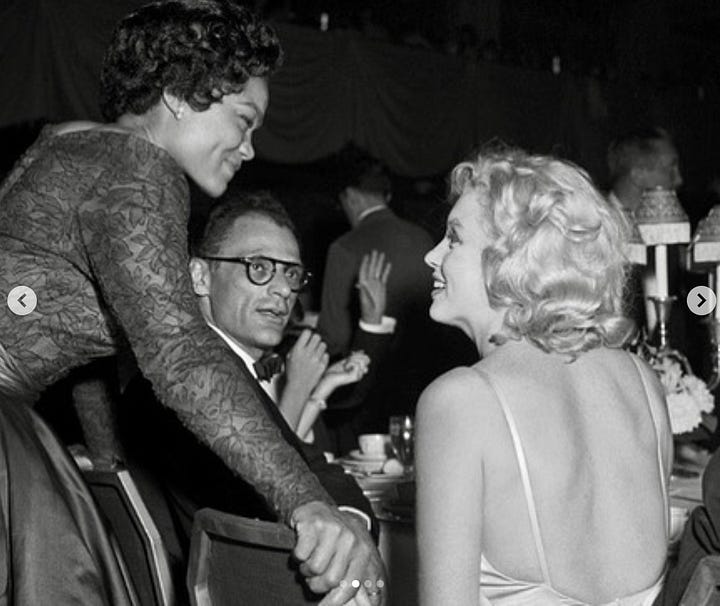

Marilyn also knew what it was like not to be able to do what you wanted to do. She had met Ella Fitzgerald in 1954 and hit it off with her, after she’d spent hours listening to Ella’s recordings and singing along under direction from a voice coach. The two women had similar stories of hard upbringings: destructive and absent families, poverty, desperation, doing whatever had to be done to get by. Marilyn described Ella as ‘my very favourite person, and I love her as a person as well as a singer, I think she’s the greatest’.
She knew that Ella was desperate to play a very hip Los Angeles nightclub that wouldn’t hire her because supposedly her somewhat matronly look wasn’t considered alluring enough. In an interview for Ms. magazine, Ella told Gloria Steinem, ‘I owe Marilyn Monroe a real debt … She personally called the owner of the Mocambo … The owner said yes, and Marilyn was there, front table, every night … I never had to play a small jazz club again.’ Ella said Marilyn didn’t know how unusual and ahead of the times she was.
A Ladies Home Journal interview more then ten years after Marilyn’s death with the long silent and somewhat shady Eunice Murray - who was always referred to as Marilyn’s nurse/housekeeper but by most accounts was more of a personal assistant/companion - although there are also many sinister conspiracy theories about her - does give some insight into ‘the real Marilyn’. After Eunice had found Marilyn’s hacienda style Brentwood house for her - the first and only house she ever owned - and Marilyn had fallen totally in love it with it, the women were working on renovations and took a trip to Mexico together to order custom furniture and tableware for the home, some of which arrived in the week after her death. Marilyn had personally chosen hundreds of plants for a ‘Mexican garden’ she was planning with flowering tress and shrubs, after spending hours reading a gardening book she purchased in Mexico. Eunice told the Journal “I’m trying to indicate the vitality and interest she put into projects’.
Sometimes Whitey would give Marilyn fake red bangs as a disguise, with a turban and dark glasses, so she didn’t get bothered. Ralph Roberts, her personal masseur and close friend, was with her one day in Beverly Hills, walking to the hardware store for something, with Marilyn in disguise, unnoticed, until all at once tyres squealed, cars slammed on their brakes, and she was swarmed by people. She told him later, ‘For some reason, all of a sudden, I wanted to be Marilyn Monroe.’ He said she could turn it off and on like a tap. The actor Eli Wallach told an almost identical story of walking through New York streets with her – she would make some ‘inner adjustment’, and suddenly everyone would recognise her; she told him, ‘I just felt like being Marilyn for a moment.’ She regarded her ‘true’ self as an entirely separate entity from ‘Marilyn Monroe’.
Ellen Burstyn (who has won the Triple Crown of Acting – an Oscar, a Tony and an Emmy) witnessed Marilyn performing a scene from Eugene O’Neill’s Anna Christie. Burstyn later said, ‘Everybody who saw that says that it was not only the best work Marilyn ever did, it was some of the best work ever seen at the Studio, and certainly the best interpretation of Anna Christie anybody ever saw. She achieved real greatness in that scene.’ Montgomery Clift was equally impressed. Another time, Marilyn did a scene from Breakfast at Tiffany’s in front of the novel’s author, Truman Capote, who pushed the studio hard to hire her for the film adaptation and was extremely disappointed when they insisted on casting Audrey Hepburn.
In 1962, Allan Abbott, a young Hollywood funeral home representative, called his wife and said, ‘You’ll never guess where I’m going!’ He told her that his company had just been called by the Westwood Village cemetery and mortuary to attend to Marilyn Monroe’s body. His wife, a fervent Marilyn fan, replied, ‘If you don’t personally go, I’m going to kill you … Be like a tape recorder and a movie camera and I want to know every detail about everything.’
He arrived at a chaotic scene: reporters, photographers, and gossip columnists Walter Winchell and Louella Parsons were all buzzing around, attempting to get a glimpse inside the mortuary. The A-frame chapel, with the embalming room in an antechamber to the side, had glass walls. Abbott had the studio called immediately to pass on the message that there was ‘a pretty serious problem … they’re trying to get in and get pictures of her’, so the studio sent a team to install drapes. Abbott then ordered security from Pinkerton’s Detective Agency and got six armed, uniformed guards.
Marilyn was a mess, and the studio wanted an open casket. Whitey arrived to do her makeup, and her hairdresser arrived with a bouffant wig that Marilyn had worn in the movie she’d just been sacked from. Her body was moved from the coroner’s office with the chartreuse Pucci dress in which she was to be laid out, plus some little rubber falsies with erect nipples that she’d generally worn on top of her bra to create the illusion she wasn’t wearing one. Mrs Hamrock, the tough-talking Slavic woman who ran things at Westwood, took one look at her body and said, ‘That doesn’t look like Marilyn to me, where are her boobs?’ The embalmer explained that the autopsy had left her looking flat and that the falsies didn’t do much. Mrs Hamrock reached under the dress, pulled out the falsies and tossed them in the rubbish. From the medical supplies she grabbed a bunch of cotton wadding, shoving great swathes of it into Marilyn’s bra until the famous figure seemed anatomically correct. ‘Now that looks like Marilyn Monroe,’ she said.
Allan Abbott wanted to take something home to his wife as a souvenir, so he grabbed the falsies from the bin while the embalmer was distracted. A lock of Marilyn’s hair was stuck to them. Abbott and his wife cherished the items until selling them at auction in 2015. Word went around that thirty thousand dollars was the going rate for pictures of her dead body, so the night manager slept next to the casket in fear of photographers breaking in.
Marilyn’s devastated ex-husband Joe DiMaggio arrived with his entourage and took care of everything – the bill, the preparations, the invitation list – while he spent the whole afternoon and evening right by Marilyn’s casket.
The funeral was small, with only thirty-one attendees, and no Hollywood people except Lee Strasberg, who was flown in to give the eulogy. He’d given Marilyn away at her last wedding, the one to Arthur Miller.
Marilyn left the majority of her estate to Lee and Paula Strasberg, even in death striving for greatness in her art, even as her death was reduced to an exciting commodity.
Her will left Strasberg 75% of her estate and requested her personal belongings be given to her friends, but he didn’t receive them for years and then he hung unto them, and his next wife Anna, inherited the entire estate, eventually selling it to the Authentic Brands Group for millions and her personal items to auction at Christies; the proceeds continue to fund the Lee Strasberg Theatre & Film Institute today.
In 2023, Marilyn still made the Forbes list of the Highest Paid Dead Celebrities.
Like most of us, I still think she deserved more, and I hope wherever she is in the cosmos, she’s listening to music and dancing to records with friends, cooking, reading, dreaming up Mexican gardens and having wonderful conversations.
*This is a lightly edited excerpt from my book Lovers Dreamers Fighters (Harper Collins, 2022)





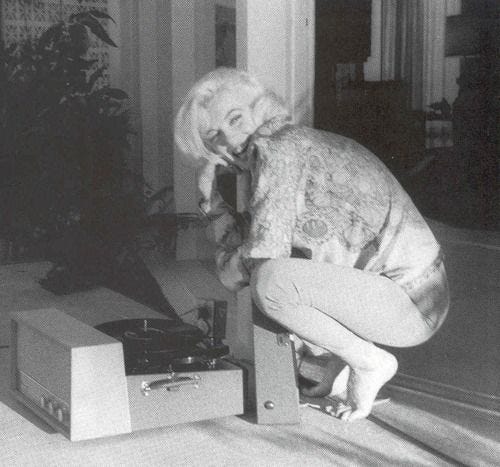



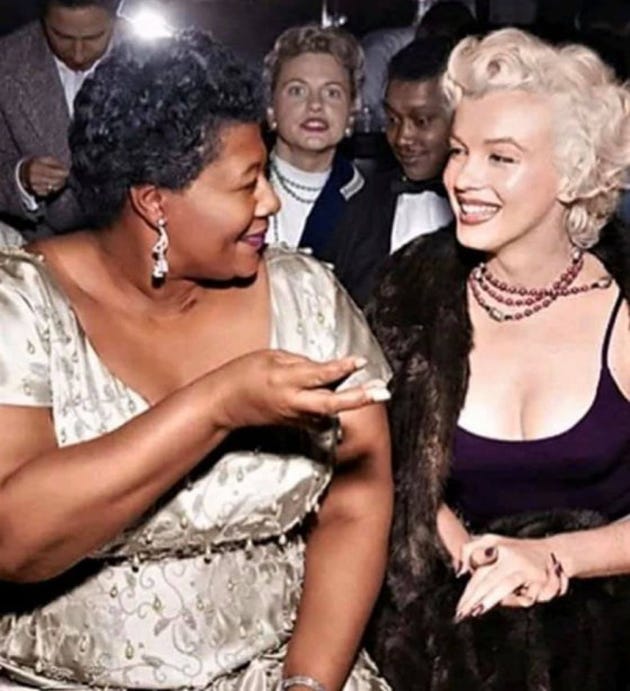
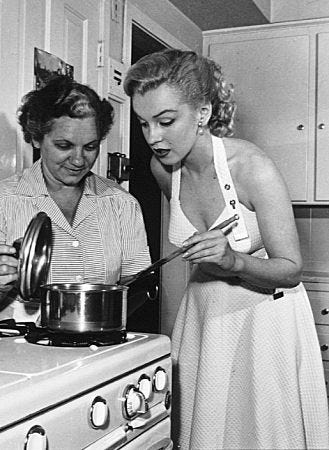
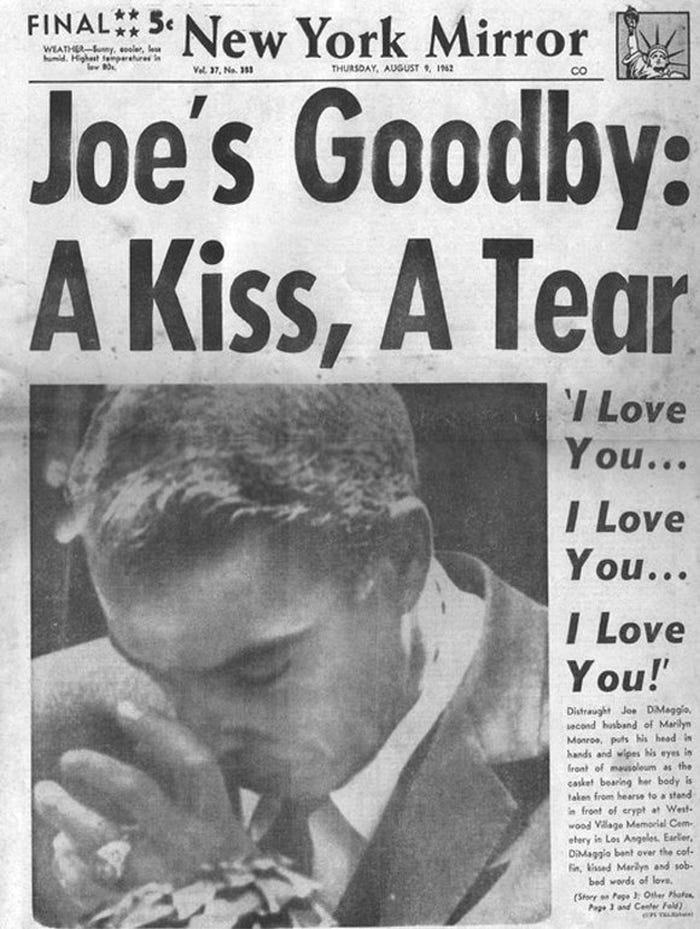
I am always intrigued by those who have a particularly strong relationship with the camera, and I can honestly say that I have never seen a bad photograph of MM. The camera loved her. On some level this is good, because it allows us to remember. I believe she deserves this. Thank you for your post.
Great post. Beautifully written.